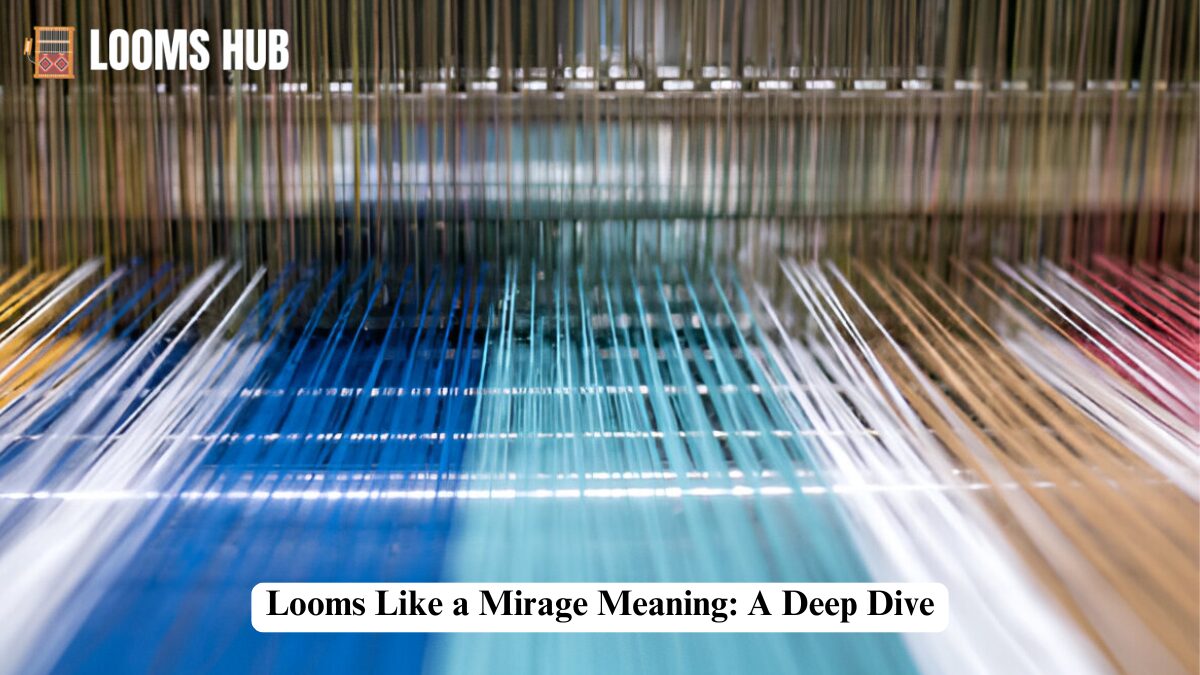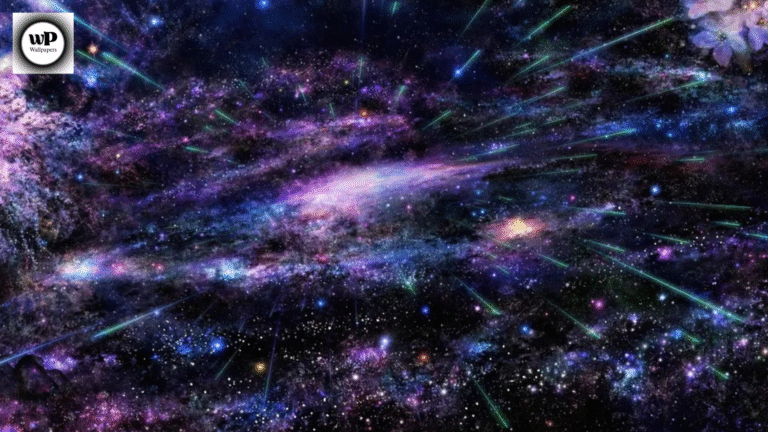The phrase “looms like a mirage” is a powerful metaphor that conveys something appearing within reach but ultimately unattainable or deceptive. It is commonly used in literature, daily conversations, and philosophical discussions to describe dreams, ambitions, and illusions that seem real but vanish upon closer inspection.
Understanding the Meaning of “Looms Like a Mirage”
Literal vs. Figurative Meaning
The phrase “looms like a mirage” has both literal and figurative interpretations:
- Literal Meaning: It describes a physical mirage—an optical illusion caused by atmospheric conditions where objects appear distorted or displaced.
- Figurative Meaning: It is a metaphor for false hopes, unattainable goals, or misleading appearances. Something may seem within reach but disappears when approached.
How “Mirage” Shapes the Phrase’s Meaning
A mirage is an illusion, often seen in deserts or over hot roads, where objects appear distorted or displaced. When something “looms like a mirage,” it suggests that:
- It appears real but isn’t.
- It seems closer than it actually is.
- It creates false hope or expectation.
Psychological Impact of a Mirage in Real Life
Mirages don’t just occur in the physical world; they exist in our minds and emotions. We often experience situations where something feels within reach, yet as we move closer, it disappears. Examples include:
- Unfulfilled ambitions that once seemed achievable.
- Relationships that appeared promising but turned out deceptive.
- Opportunities that looked solid but turned into nothing.
Historical and Cultural Context of Mirages
Ancient Uses of the Mirage Concept
Throughout history, mirages have symbolized deception, false hope, and illusion. Some notable cultural connections include:
- Ancient travelers mistaking mirages for water in the desert.
- Greek mythology, where illusions and false realities were often themes in stories (e.g., the Sirens’ deceptive songs).
- Religious texts, which use mirages as symbols of falsehood and temptation.
Mirage in Mythology and Folklore
Mirages have influenced legends worldwide:
- Norse Mythology: The Fata Morgana, a type of mirage, was believed to be a magical illusion cast by Morgan le Fay.
- Hindu Mythology: The concept of Maya, meaning illusion, represents the deceptive nature of reality.
- Native American Tales: Some stories tell of phantom water sources appearing in the desert to mislead travelers.
The Role of Mirages in Literature and Storytelling
Many writers have used mirages to depict false hopes and unattainable dreams. Examples include:
- F. Scott Fitzgerald’s “The Great Gatsby”: The green light Gatsby reaches for symbolizes a dream that “looms like a mirage.”
- Samuel Taylor Coleridge’s “Kubla Khan”: The poem describes a dreamlike paradise that is almost real but never truly attainable.
- Fantasy novels often depict mirages in enchanted lands, misleading characters on their journey.
Scientific Explanation of a Mirage
What Causes a Mirage?
Mirages are caused by light bending due to temperature differences between air layers. When light passes through hot and cool air, it bends in ways that create the illusion of objects appearing where they aren’t.
Types of Mirages
| Type | Description | Example |
| Inferior Mirage | Objects appear lower than they actually are. | A puddle-like illusion on a hot road. |
| Superior Mirage | Objects appear higher than normal due to cold air below warm air. | Seeing ships floating in the sky. |
| Fata Morgana | A complex, distorted mirage that changes rapidly. | Ships appearing as castles or entire cities in the air. |
Real-Life Examples of Mirages
- Desert mirages, where thirsty travelers believe they see water.
- Highway mirages, where distant reflections look like water puddles.
- Polar mirages, where icebergs and ships appear to float in the sky.
Symbolism in Literature and Art
How Writers Use the Mirage Metaphor
Authors and poets use mirages to express unfulfilled dreams, false hope, and deception. The phrase “looms like a mirage” often describes love, success, or paradise that remains unreachable.
Common Themes Associated with Mirages in Poetry and Fiction
- Hope vs. Reality: The dream seems within reach but remains unattainable.
- Illusions of Wealth & Success: The pursuit of material gain often turns out hollow.
- Lost Love & Longing: Love that seems real but ultimately fades.
Examples from Famous Works
- T.S. Eliot’s “The Wasteland” – Describes illusions of water in a barren land.
- Paulo Coelho’s “The Alchemist” – Explores the idea of chasing dreams that turn out differently than expected.
- Shakespeare’s “Macbeth” – The witches’ prophecies “loom like a mirage” to Macbeth, leading to his downfall.
Psychological and Emotional Interpretations
Mirage as a Symbol of Illusions in Life
- Chasing dreams that seem close but remain unreachable.
- Falling for deception or manipulation.
- Being blinded by false hope.
When Dreams “Loom Like a Mirage”
- A job promotion that never materializes.
- A perfect relationship that turns out to be a fantasy.
- A financial opportunity that disappears upon investigation.
Conclusion
The phrase “looms like a mirage” perfectly captures the feeling of false hope, deception, and unattainable dreams. Whether in literature, real-life ambitions, or psychological experiences, the mirage metaphor reminds us to be cautious about illusions and distinguish reality from fantasy.
Have you ever experienced a situation where something “loomed like a mirage” in your life? Let us know in the comments!
FAQs
What does “looms like a mirage” mean?
It describes something that appears within reach but is ultimately an illusion.
Where did the phrase originate?
It has roots in both literal mirages and metaphorical uses in literature.
What is an example of a mirage in literature?
The green light in “The Great Gatsby” symbolizes an unattainable dream.
Is a mirage real?
No, it is an optical illusion caused by light bending due to temperature differences.
How does a mirage affect human perception?
It tricks the brain into seeing something that isn’t actually there.



